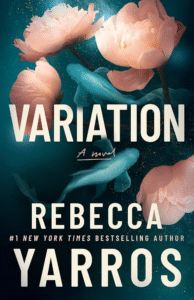The Allure of the Abyss: The Psychology Behind Our Obsession with True Crime
The shelves of bookstores overflow with meticulously researched accounts of heinous crimes, podcasts detailing every gruesome detail dominate listening charts, and streaming platforms dedicate entire sections to docuseries chronicling real-life murders, disappearances, and scandals. From Victorian-era penny dreadfuls to modern-day TikTok summaries, humanity’s fascination with true crime is an enduring phenomenon. This widespread and often intense absorption begs a fundamental question: what is the deep-seated psychological allure that draws us to stories of violence, betrayal, and human darkness? The obsession with true crime is a complex interplay of evolutionary instincts, cognitive biases, emotional catharsis, and a societal need for understanding and control.
Evolutionary Instincts and the Drive for Survival
One primary psychological driver behind our true crime obsession lies in our deeply ingrained evolutionary instincts for survival. For millennia, understanding threats in our environment was crucial for self-preservation. True crime narratives, at their core, are case studies in danger. By observing the methods, motivations, and mistakes of perpetrators and victims, our brains subconsciously engage in a form of vicarious learning. We analyze potential warning signs, develop mental escape plans, and perhaps even refine our own risk assessment. While the immediate physical threat is absent, the primitive part of our brain treats these stories as cautionary tales, offering lessons on how to avoid becoming a victim ourselves. This cognitive “training” allows us to experience fear and danger from a safe distance, fulfilling a primal need to understand the threats that exist, even if they seem remote.
Cognitive Curiosity and the Quest for Order
Beyond survival, human beings possess an innate cognitive curiosity and a fundamental desire for order in a chaotic world. True crime presents a profound disruption of that order – a violation of social norms, laws, and often, basic human decency. Our minds are compelled to understand why such acts occur. We crave details, motives, and resolutions, seeking to fit the pieces of a fragmented narrative into a coherent whole. This quest for understanding extends to the perpetrator’s psychology: what drives someone to commit such acts? Is it nature or nurture? Mental illness or pure evil? By attempting to deconstruct the criminal mind, we are, in a way, trying to reassure ourselves that such aberrations are comprehensible, and therefore, perhaps containable. The satisfaction derived from seeing justice served, or even just from understanding the sequence of events, helps to restore a sense of predictability and control in our worldview.
Emotional Catharsis and Empathy
The emotional engagement with true crime is also a significant factor. While seemingly morbid, these stories can offer a form of emotional catharsis. Experiencing fear, sadness, and anger vicariously through the narrative can be a safe outlet for complex emotions. Furthermore, true crime often evokes a strong sense of empathy for the victims and their families. Witnessing their suffering and resilience can foster a deeper connection to the human condition, reinforcing our own moral compass and appreciation for life. For some, the act of consuming true crime might even be linked to a desire to honor the victims, to ensure their stories are told, and to advocate for justice, even if only through passive consumption. This emotional processing, while uncomfortable at times, can be a strangely purifying experience.
The Morality Play and the Fascination with the Forbidden
Finally, true crime functions as a modern-day morality play. It starkly delineates good from evil, normal from abnormal, and right from wrong. In a society that often blurs moral lines, true crime offers clear villains and heroes (the victims and the investigators). This stark contrast can be reassuring and reinforcing of societal values. There’s also an undeniable element of fascination with the forbidden. The dark side of human nature, while terrifying, holds a morbid allure. True crime allows us to peek into the abyss, to confront the unspeakable, and to grapple with the darkest capabilities of humanity, all from the relative safety of our living rooms. It’s a controlled exposure to the taboo, satisfying a hidden curiosity without crossing any moral or legal boundaries ourselves.
In conclusion, our pervasive obsession with true crime is not a simple fascination; it’s a multi-layered psychological phenomenon. It taps into our evolutionary hardwiring for survival, satisfies our cognitive need for understanding and order, provides an avenue for emotional catharsis, and acts as a contemporary morality play. By engaging with these narratives, we are not merely consuming entertainment; we are confronting the darker facets of humanity, learning about the world’s dangers, and ultimately, striving to make sense of the incomprehensible in an ongoing quest for safety, control, and meaning.




















